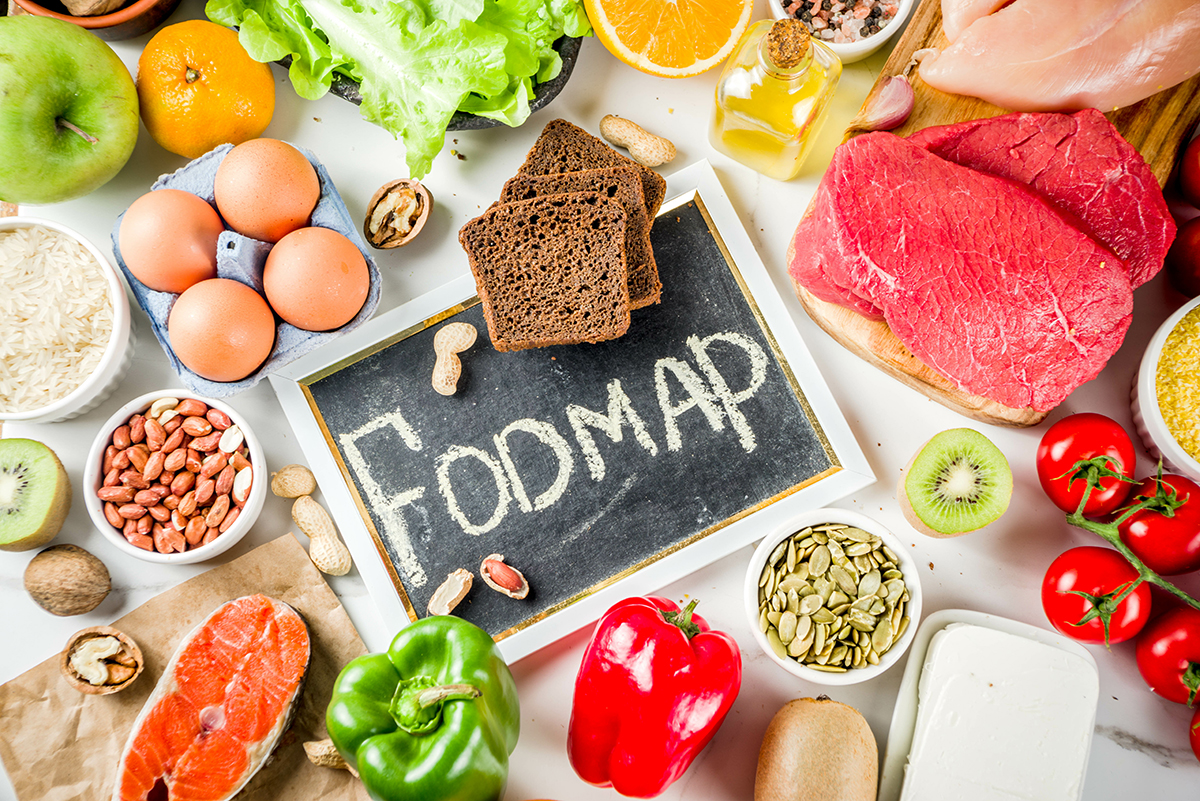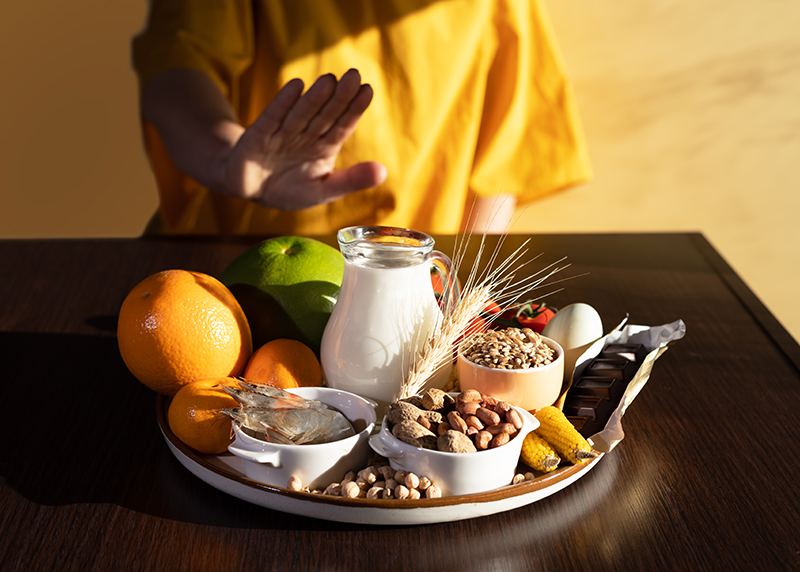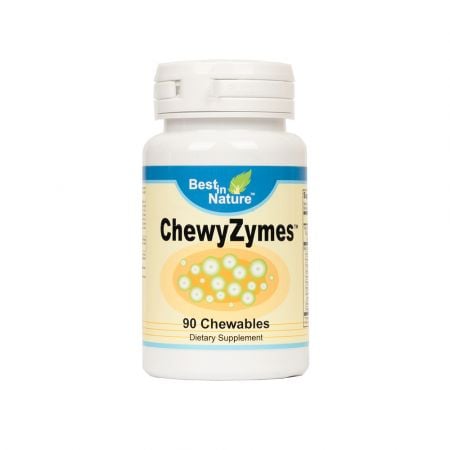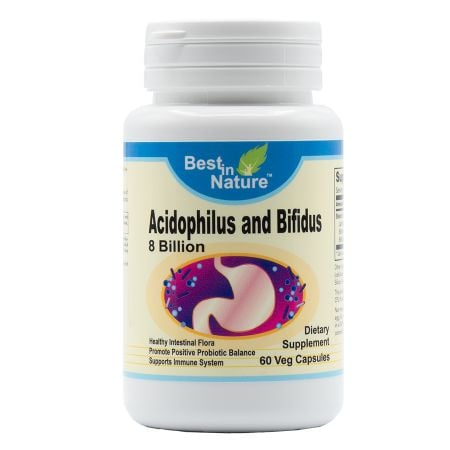
You might recall a friend or family member doing an elimination diet or heard the word FODMAP. So what are FODMAP foods and the FODMAP or elimination diet? Could it be the key to easing your digestive issues?
What are FODMAP Foods?
FODMAP is an abbreviation for a group of carbohydrates that the body can have trouble digesting. It stands for Fermentable Oligosaccharides, Disaccharides, Monosaccharides and Polyols.
Foods that are high in FODMAPS include:
- Dairy milk, yogurt and ice cream
- Wheat-based products such as bread or cereal
- Legumes like beans and lentils
- Some vegetables, such as artichokes, asparagus, onions and garlic
- Some fruits, such as apples, apricots, blackberries, cherries, grapefruit, mango, and nectarines.
People with intolerances to these foods can experience symptoms like cramping, stomach discomfort, gas, bloating or diarrhea.
[READ: 15 Gut Health Hacks for a Healthier You]
What is the Low FODMAP diet?

The low FODMAP or elimination diet, systematically removes these foods from your diet for a time. The elimination diet can help you identify individual food sensitivities or allergies so that you can avoid these trigger foods in the future.
Doing so also relieves your digestive system of having to deal with these irritants which gives your gut a chance to rest and get back to a healthy balance of gut flora.
What are FODMAPs?
FODMAPs are:
Fermentable
We normally think of fermentation in terms of things like kimchi, pickles or beer but fermentation can happen in the gut as well. Fermentable foods feed your gut bacteria which release gasses afterward.
Oligosaccharides
These are soluble plant fibers known as prebiotics, which feed the beneficial PRObiotic bacteria in your gut. High oligosaccharide foods include onions, garlic, beans/lentils and many wheat products.
Sensitivity to oligosaccharides may be the source of non-celiac gluten sensitivity. Gluten free-grains are lower in fermentable sugars so many who have non-celiac gluten-sensitivity, may actually be triggered by the oligosaccharides rather than gluten itself.
Disaccharides
You may not recognize the term “disaccharide" but you definitely know the most popular one, lactose. This sugar, present in dairy and human milk, can undergo fermentation in the lower intestine resulting in the release of gasses and subsequent discomfort.
All humans begin life able to digest lactose but can become intolerant over time. It’s estimated that up to 90% of the population in Asia is lactose intolerant.
Monosaccharides
Fructose, or fruit sugar is the primary fermentable sugar in this group. The amount of monosaccharides in fruits varies greatly and individual tolerances vary so don’t give up fruit just yet!
Here are some specific fruits that are low in FODMAPs: Bananas, blueberries, cantaloupe, grapefruit, honeydew, kiwi, lemon, lime, oranges, and strawberries
Polyols
These are sugar alcohols that can naturally be found in some fruits but you’ll most likely encounter them in artificial sweeteners under the names xylitol, erythritol, orbitol, lactitol, mannitol, and maltitol.
[READ: Gut Health and Longevity, Is There a Link?]
Why are FODMAPs Hard to Digest?
FODMAPs are short-chain fermentable carbohydrates which means two things. They’re long sugar molecules linked together in chains and they’re fermentable by your gut bacteria. Linked molecules need to be broken down into single molecules for digestion in the small intestine but FODMAPs can’t be broken down here.
Consequently, they move on to your large intestine where the bacteria living in your colon ferment them. This produces hydrogen gas and fatty acids as byproducts inside your gut leading to symptoms like gas, bloating and diarrhea.
Does All of This Mean FODMAPs are Bad or Unhealthy?
Perhaps surprisingly, no. Digestion is a complex process that’s evolved to cope with foods that don’t always get fully digested in the gut such as the important prebiotic fibers that feed our gut flora; a part of the natural arrangement between humans and the bacteria that help us out.
Even if these foods and their place in our digestive process is natural, some people are more sensitive to them to the extent that symptoms may negatively impact their quality of life.
Should You Consider a LOW FODMAP Diet?
Traditionally, it’s been most useful for people with Irritable Bowel Syndrome (IBS) or small intestinal bacterial overgrowth (SIBO) according to John Hopkins. With its high rate of success at easing symptoms, the pool of people to whom it’s suggested has grown a bit.
However, the extremely restrictive nature of the FODMAP/elimination diet means that it shouldn’t be done without the supervision of a doctor or dietitian. A professional can also prevent you from taking on unnecessary restrictions.
Drawbacks of the Low FODMAP Diet
Those who are underweight will want to be especially careful. Even though it’s not geared towards weight loss, the nature of the diet eliminates so many foods that weight loss often happens.
How to Do a Low FODMAP Diet
The first stage is to generally eliminate all high FODMAP foods for a few weeks. If FODMAPs are the cause of digestive distress, one might experience decreased irritation in several days.
After three weeks, one is generally advised to reintroduce some of these foods one at a time to determine which food causes the symptoms. Then eliminate those moving forward.
Foods That Are Okay to Eat on a Low FODMAP Diet
- Eggs and meat
- Certain cheeses such as brie, Camembert, cheddar and feta
- Almond milk
- Grains like rice, quinoa and oats
- Vegetables like eggplant, potatoes, tomatoes, cucumbers and zucchini
- Fruits such as grapes, oranges, strawberries, blueberries and pineapple
Supplements that may help*
Acidophilus and Bifidus: In studies, probiotics such as this are normally used alongside the low FODMAP diet.
ChewyZymes: Some find supplementation of digestive enzymes can provide relief.
Bottom Line
FODMAPs are a type of carbohydrate or sugar that bypass the gut and are broken down in the large intestine which causes digestive upset. Many common foods contain them so a low FODMAP/elimination diet is a strategy to find which specific ones trigger problems. While many have success, it’s not recommended to try the diet without supervision.
This article is provided for informational purposes only and is not intended to be used as medical advice. If you have immediate concerns about your health, please seek the help of your physician.







Validate your login
Sign In
Create New Account